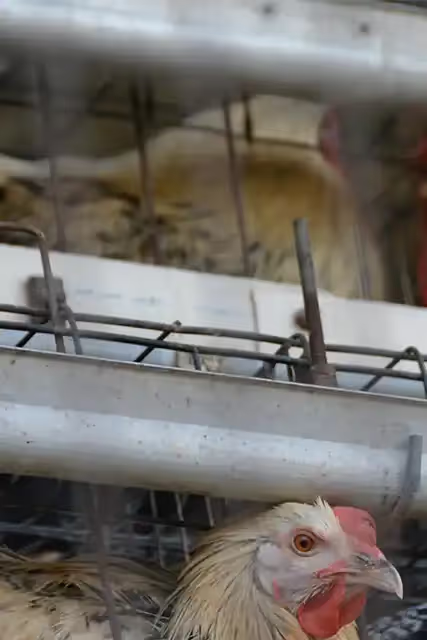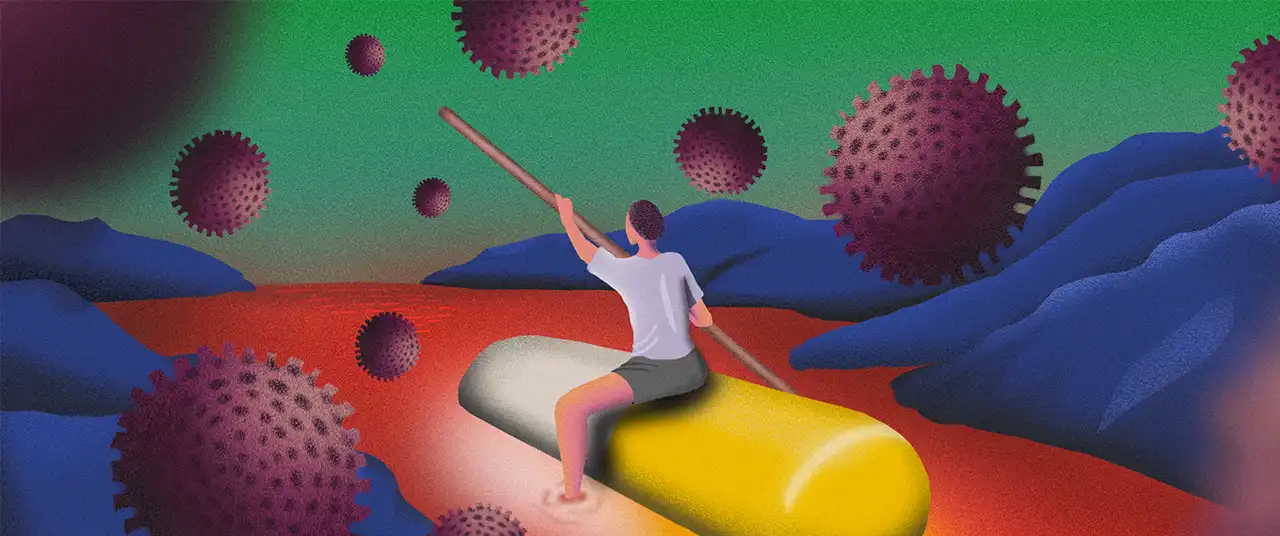Drug overuse in farming is putting public health at risk






In 2020, antimicrobial resistance (AMR) was linked to 700,000 deaths worldwide, a figure that continues each year. AMR causes severe infections in approximately 2.8 million people annually. In India alone, AMR was associated with 1,042,500 deaths in 2019, a number projected to more than double by 2050.
“While the term antibiotic resistance (ABR) is loosely used interchangeably with antimicrobial resistance (AMR), antibiotics as a group of medicines only work on pathogens that are bacterial and those that are semi-bacterial in nature. They don’t work on viruses or fungi. There are multiple types of bacteria, different ones in different living beings and different groups of antibiotics that will work on them, causing a wide variety of medicines to be circulating in our environment,” says Dr Samita Moolani Katara, an ophthalmologist from Pune.
Several studies have established the link between meat and antimicrobial resistance, and the potential risks are alarming. Resistant bacteria can travel from animals to humans through raw and cooked food, or even directly from animals on farms.
Despite the challenge of feeding its large population, India boasts a strong agricultural sector, with a significant focus on animal husbandry. The country stands tall as the world leader in milk production, ranks third globally in egg production, and holds the eighth position in meat production.
Moreover, the country caters to the growing international demand for meat, poultry, and agricultural products, with buffalo meat being a key export.
AMR and meat
AMR is a complex and growing crisis that connects our food, our health, and the environment. Microbial strains found in food, particularly Staphylococcus spp., extended-spectrum beta-lactamase (ESBL)-producing Enterobacteriaceae, and vancomycin-resistant Enterococcus spp., highlight the spread of AMR. Today, the threat comes from multidrug-resistant (MDR) bacteria that can withstand multiple antibiotic classes, affecting both humans and animals.
“What’s so scary about this situation is that currently no new antibiotics are being developed globally. The same top-of-the-line antibiotics that were developed a couple of decades ago are in use today so when patients develop a resistance to these, there aren’t many other courses of action that us doctors are left with,” says Dr Samita who is seeing a lot of antibiotic resistance in her patients because even patients with a simple case of viral pink eye are being prescribed broad-spectrum antibiotics.
Antimicrobials, particularly antibiotics, are commonly used in the meat industry globally and in India, both for growth promotion in animals slated for meat consumption and to protect animals from disease. These antimicrobials, such as antibiotics, antivirals, antifungals, and antiprotozoals, are effective at killing or inhibiting the growth of harmful microorganisms. When humans consume meat that contains antimicrobial-resistant bacteria, these bacteria can transfer to the human gut, potentially resulting in infections that are resistant to treatment.
The same top-of-the-line antibiotics that were developed a couple of decades ago are in use today so when patients develop a resistance to these, there aren’t many other courses of action that us doctors are left with.
“Often, human and animal health professionals over-prescribe antibiotics or advise people to use them even when they’re not required,’ says Dr Geeta Kumar, a gynaecologist from Rae Bareilly, Uttar Pradesh.
Many antibiotics given to farm animals are excreted in their waste, which is frequently used as manure in agriculture. This practice introduces antibiotics into the soil and water, contaminating food crops as well. This contamination allows resistant bacteria in animals to reach humans directly or indirectly through food, water, soil and manure.
“The unhygienic conditions and high number of animals packed into a small space make them even more susceptible to infections, which is why meat farms introduce various antibiotics as preventives, not curatives,” says Dr Samita.
Some types of meat are riskier than others. Salmon, often eaten raw, is one such example. “Salmon is one of the worst meats to have without cooking because their breeding conditions are quite bad. There is so much sickness in the water they’re farmed in that they are pumped with antibiotics. Salmon is often eaten without cooking, which results in a high transfer of antibiotics to the consumers,” she adds.
Policies and regulation
In 2010, India ranked as the fourth-largest user of antibiotics in animal food production, following China, Brazil, and the United States, and accounted for 3% of the global antibiotic use in this sector. Despite oversight from international regulatory bodies like the Food and Drug Administration (FDA), World Health Organization (WHO), World Organisation for Animal Health (WOAH), and Food and Agriculture Organization (FAO), the widespread use of antibiotics in healthy animals persists, partly due to the predominantly non-vegetarian diets in Western countries.

In India, regulatory bodies such as the Central Drugs Standard Control Organization (CDSCO) and the Food Safety and Standards Authority of India (FSSAI) have made some efforts - while they have made policies and a list of drugs to watch out for, the implementation of these policies has not been very stringent. There has been some tightening of regulations around the use of antibiotics in food production as recently as last week. The FSSAI lowered the permissible residue levels in foods and also put more antimicrobial drugs on its watchlist.
Practical precautions
The UN’s One Health campaign advocates for a unified approach to treating animals, humans, and the environment with equal care in the fight against AMR.
Holistic nutritionist Aashti Sindhu points to lab-grown meat as a hopeful alternative. “Every time we eat meat that’s been pumped full of drugs, we’re adding to the problem. Lab-grown meat could be a game-changer—it doesn’t need antibiotics, so it’s cleaner, better for our health, and kinder to the planet. It’s a win-win solution that could really make a difference.”
Several organisations are now working to counter AMR in India’s National Action Plan, with initiatives focused on awareness, enhanced surveillance, infection control, and research. Although antibiotic-free poultry options exist, there is often limited verification of their claims, leaving consumers in a tricky position.
Veterinarians, too, play a critical role. “I’m personally aware of a number of times I have been prescribed antibiotics for very minor ailments. If the government increased the prices of antibiotics, I’m sure vets would reduce use of them,” says Goa-based veterinarian Dr Suvarnaraj Gaonkar. As individuals, we must take responsibility by staying informed and reducing our own antibiotic reliance.
Beyond reducing meat consumption, small actions can make a difference. “Washing hands is key. It might sound simple, but it’s a highly effective tool in preventing infection spread,” says Dr Kumar.
For those who choose to eat meat, opting for certified organic and humane sources is best. However, sourcing verification can be challenging in India. Ensure meat is thoroughly washed and fully cooked. Other precautions include using separate cutting boards for meat, washing hands between handling meat and other foods, and storing food properly to minimise infection and AMR risks.
By being mindful of the choices we make–from what we eat to how we approach hygiene–we can all play a part in slowing the AMR crisis.
{{quiz}}
Explore other topics
References
- https://pmc.ncbi.nlm.nih.gov/articles/PMC7168130/
- https://www.healthdata.org/sites/default/files/2023-09/India.pdf
- https://pmc.ncbi.nlm.nih.gov/articles/PMC10609446/#:~:text=aureus%2C%20ESBL%2Dproducing%20Enterobacteriaceae%2C,considered%20the%20most%20consumed%20worldwide.
- https://en.vikaspedia.in/agriculture/agri-directory/reports-and-policy-briefs/basic-animal-husbandry-statistics
- https://pmc.ncbi.nlm.nih.gov/articles/PMC7480485/#:~:text=In%202010%2C%20India%20was%20estimated,milk%20samples%20contains%20antibiotic%20residues.











